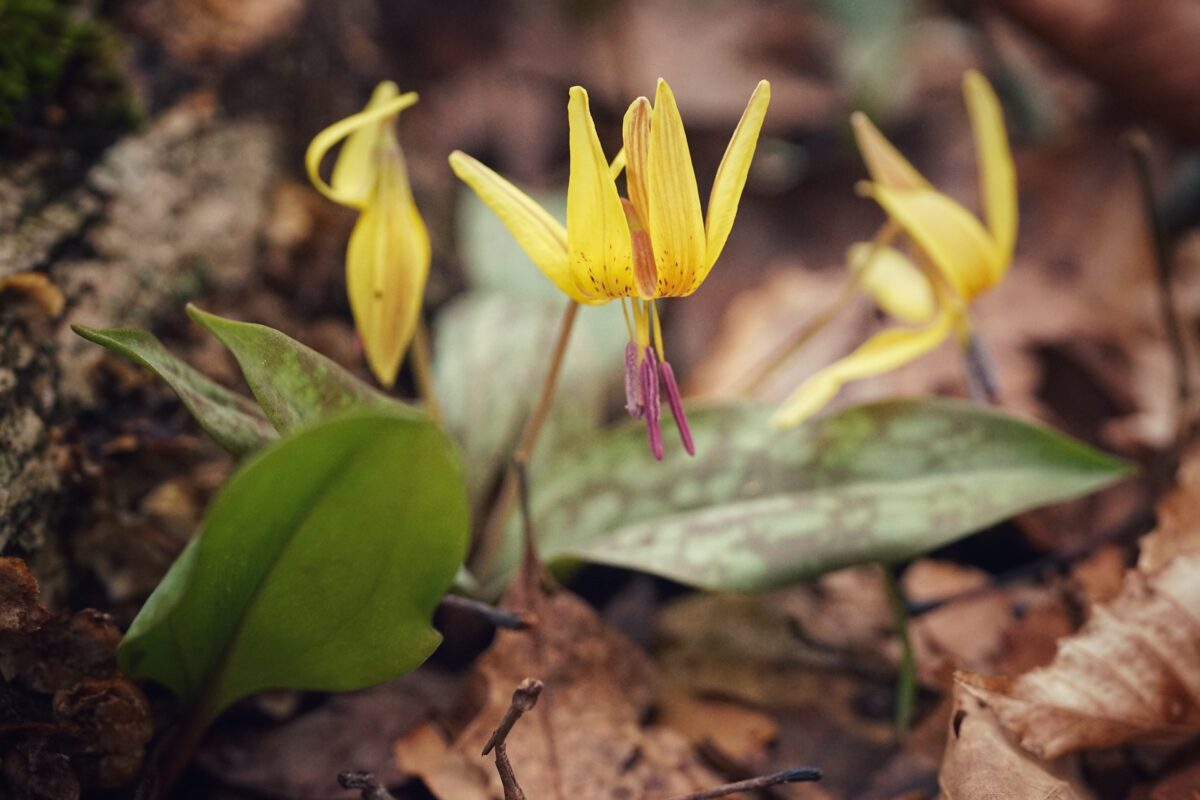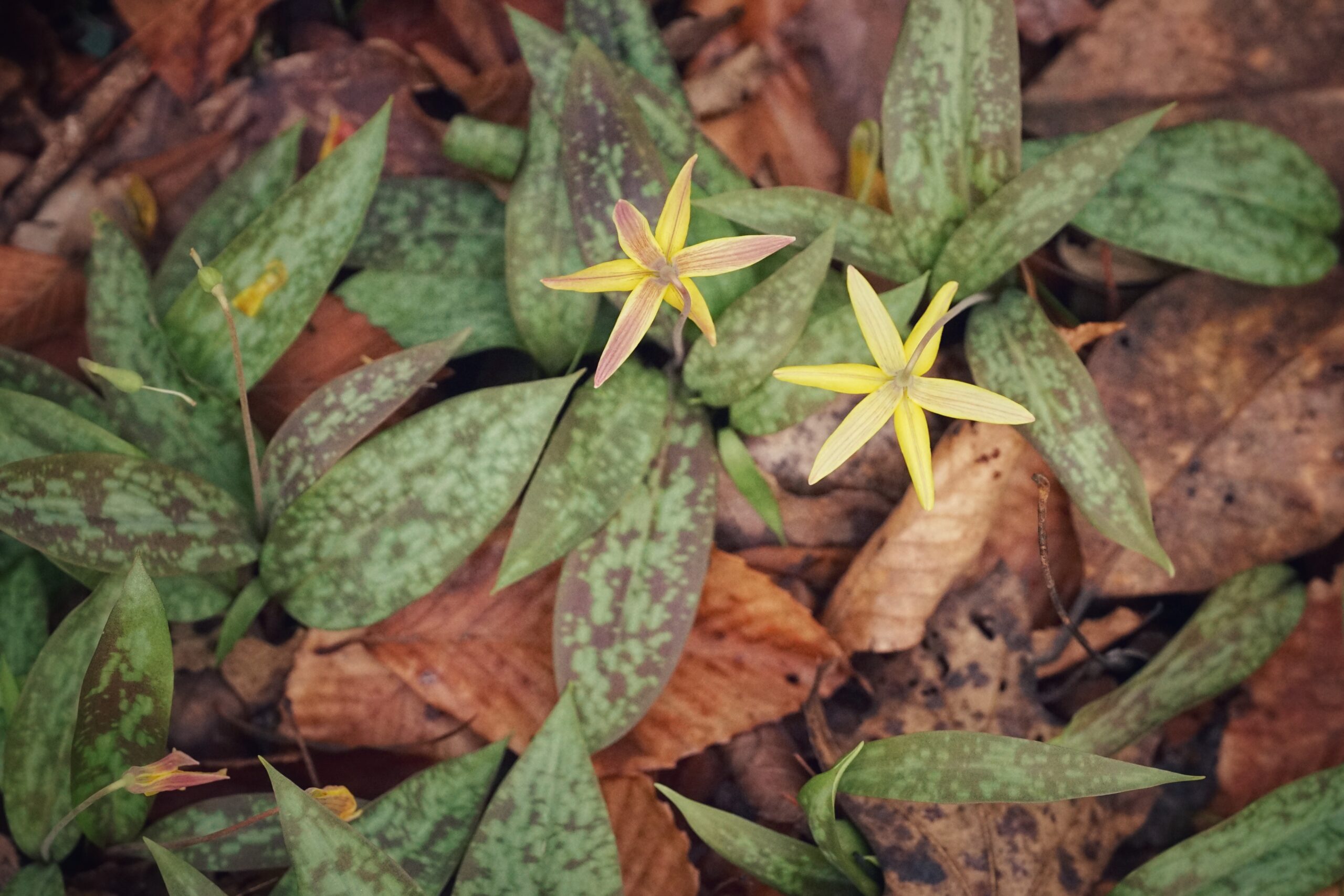Dimpled troutlily
Pictured above: Dimpled troutlilies (Erythronium umbilicatum) by Emily Bell. Click on terms for botanical definitions. View post as a PDF.
For only a few months of very early spring, Dimpled troutlilies (Erythronium umbilicatum) can be found blanketing the ground of sloped deciduous forests throughout the southeastern US. They are Appalachian in origin, having migrated down during the ice ages and remained in areas that still suited them after the climate warmed again — a phenomenon known as Pleistocene refugia. Listed as state-endangered, Florida’s populations are rare and limited to three counties in the Panhandle. The largest known population occurs just 15 miles into Georgia from the Florida border at Wolf Creek Trout Lily Preserve, a conservation area purchased and protected by members of the Florida Native Plant Society Magnolia Chapter.
The common name troutlily refers to the 5- to 17-cm elliptic to ovate–lanceolate leaves, which are green and irregularly mottled with light green to purplish shades in a pattern that resembles a speckled trout. A single flower emerges from a 5- to 8-inch stem with six petals that are yellow with purplish specks on the inside and brownish to purplish streaked on the outside. The flowers open in the afternoon sun and the petals recurve backward to reveal conspicuous brown to purple stamens.

As spring ephemerals, the plants take advantage of the light that filters through to the forest floor in late winter to early spring when the deciduous hardwoods have lost their leaves. They are only visible above ground during this short time and remain dormant the rest of the year, storing their energy underground. In addition to spreading via their underground root system of corms, they are myrmecochorous, meaning their seeds contain elaiosomes, which are attractive to ants as a food source. As a result, ants collect the seed and disperse them. The flowers are a nectar source for early emerging bees and other flying insects who aid in their pollination.
Family: Liliaceae (Lily Family)
Native range: Liberty, Leon and Gadsden Counties
To see where natural populations of Dimpled troutlilies have been vouchered, visit florida.plantatlas.usf.edu
Hardiness: Zone 8B
Lifespan: Perennial
Soil: Moist rich loam
Exposure: Part shade
Growth habit: Up to 6 inches tall by 6 inches wide
Propagation: Corms and seed
Garden tips: While occasionally available from native plant nurseries, Dimpled troutlilies require an extremely specific natural habitat and rarely succeed in gardens. They also require a cold season and cannot be successfully grown south of their range.
Dimpled troutlilies are occasionally available from nurseries that specialize in Florida native plants. Visit www.PlantRealFlorida.org to find a nursery in your area.

